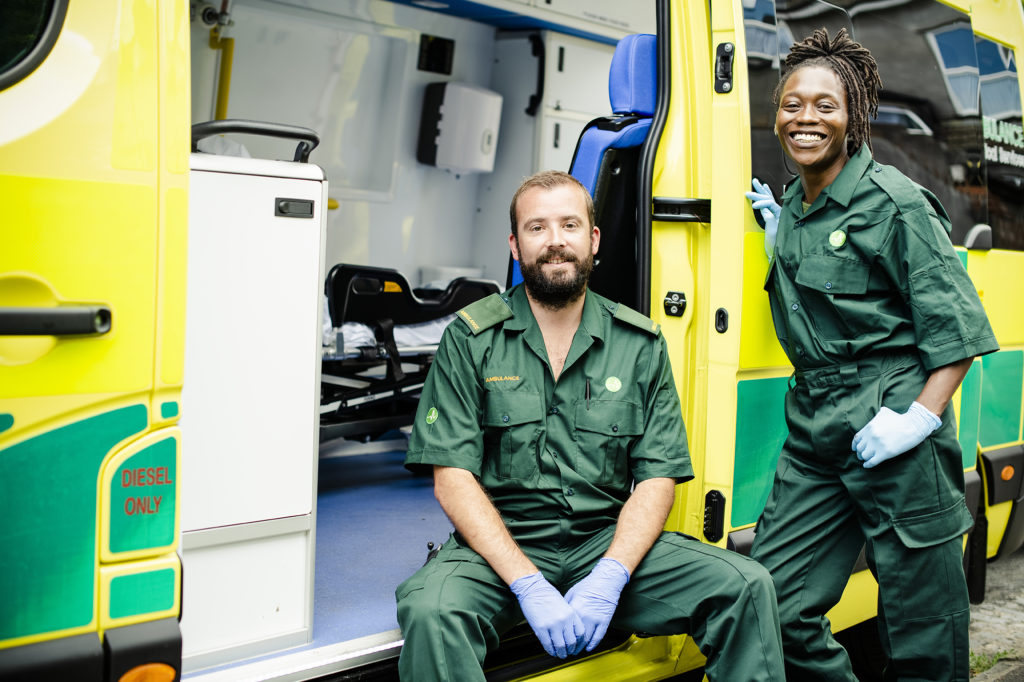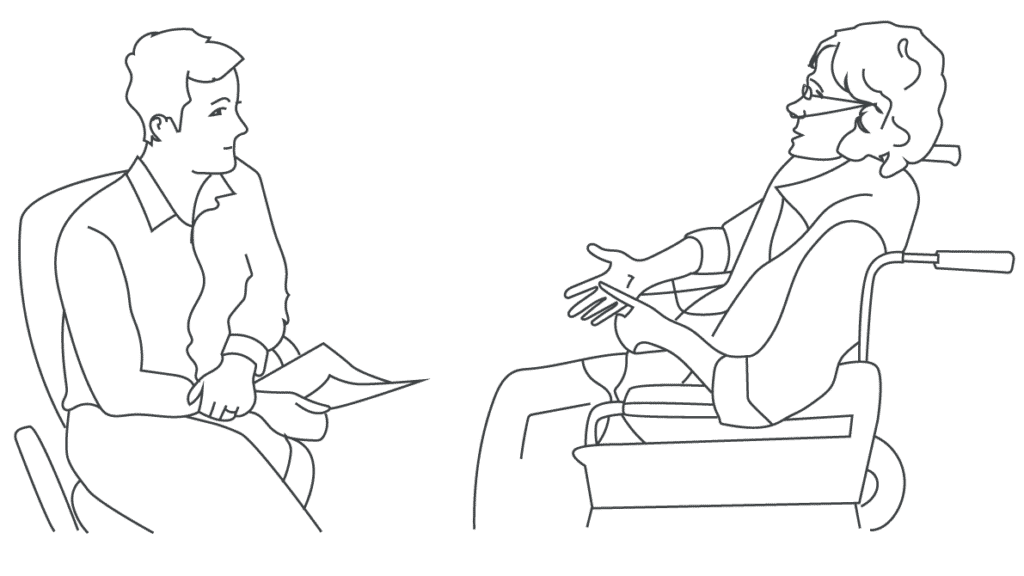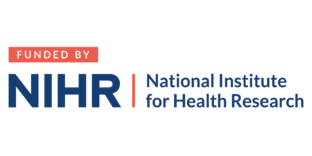A paramedic’s perspective: ‘When preserving life isn’t always the right thing to do’
Co-written by Esther Waterhouse a Palliative Medicine consultant at Walsall healthcare NHS Trust.

A recent TV documentary followed paramedics on a shift, providing insights into the wide range of situations they are called to deal with over a short period of time. It was striking how, as frontline workers, paramedics can be faced with a fundamental and difficult decision: to attempt to preserve life or to promote appropriate care for someone who is identified as clearly dying. These decisions are frequently hindered by poor documentation or unclear action planning. When attending to a patient in crisis – for instance being called to a care home by concerned care staff, or to a patient’s home by frightened and anxious relatives – paramedics can feel the tension between following protocols to attempt to preserve life or prioritising supporting the patient and their companions through the patient’s dying stage.
These dilemmas are not isolated incidents and are often compounded at night-time or over Bank Holidays. In the documentary one paramedic commented that not acting on red flag symptoms went ‘against training’, yet they felt that ‘preserving life isn’t always the right thing to do’.
This documentary raised issues which can be explored in communication skills training using the Real Talk Case Two ‘Lynn’ in module one Broaching Dying www.realtalktraining.co.uk. We have found that this case offers opportunities for facilitators and paramedics to reflect on a patient’s holistic needs, explore what someone ‘really’ wants, and when appropriate to question the assumption that since an ambulance has been called the patient definitely wishes to go into hospital. Using Real Talk has helped paramedics we worked with to think ‘holistically’, i.e. about the person and not only the disease process, and to consider ways of broaching dying and talking with distressed families. In what follows, we describe how we worked using the Real Talk Lynn case with a group of paramedics. We also summarise our own reflections on the training session we ran, as well as those of the paramedics.
Paramedics engage with Real Talk – talking about dying
“…I was gasping for breath and ended up in hospital at midnight…”
[Real Talk – Lynn case study two, clip 4, line 28-29]

The Real Talk team recently had the pleasure of working with a small group of paramedics whose reflections on practice resonated with the paramedics documentary mentioned above. They talked of how little training they receive on end of life care, and about the need for ongoing professional development to equip them with care of the dying person, and to equip them to best manage the tensions experienced in their clinical decision making.
We started the workshop by exploring situations paramedics attend when a person may be near the end of life; these included responding to 999/111 calls for help with symptoms, family members’ or care workers’ panic, and GP referrals to take a person to hospital/alternative place of care or to move patient up or downstairs. We explored the challenges they face when attending to a patient who is moving toward the end of life. These included a lack of paperwork or care history, a lack of preparation at home for the management of end of life e.g. lack of a clear plan, no anticipatory drugs prescribed, they also included unrealistic expectations of family members with regards the patient’s prognosis – and the challenges of sensitively but effectively enabling recognition of dying. Sometimes inaccurate information was given at the time of the 999/111 call, and at times crews felt they had to undertake life preserving actions in line with service protocols, and for fear of litigation. The paramedics feared ‘getting it wrong’ – and at times this placed them under great pressure.
The next question we explored at the workshop was: ‘What can make this situation so hard?’. Responses focused on denial or lack of recognition of dying on the part of patients, family members or care home staff; on other professionals’ fear or caution; and on lack of experience and confidence. Influences and pressures on decision making included: responding to ‘red flag’ indicators and following protocols; demands of family members; not knowing when to stop with interventions, working with people from different cultures and with different expectations than those more familiar to the paramedics.
To help make these experiences and reflections less abstract, more concrete and more alive, we used the Lynn case study. Lynn has multiple co-morbidities, and is living with a range of distressing symptoms including breathlessness, immobility and receiving artificial nutrition due to inability to swallow foods/fluid. The Lynn case study has 4 video clips taken from a consultation between herself and a palliative medicine specialist doctor.
We watched each of the first three clips, and for each clip we asked the paramedics to consider ‘what did you see, what did you hear’ as a means of starting and shaping discussions. We encouraged the paramedics to discuss their observations in pairs. They focused on both verbal and non-verbal aspects of Lynn’s communication, observed aspects of her (quite invasive) equipment, and recognised that they would not be surprised if she died soon. Paramedics reference to the Gold Standards Framework for end of life care suggested they might have had insights and experience in engaging in end of life care in their previous practice. Wider group discussions led to exploring examples of the use of continuers and silence. Understanding the value of continuers – words like ‘mm’, ‘yes’, and ‘no’ said in ways that encourage the main speaker to continue – are important components of active listening. The importance of listening – and showing that you are listening – is one of the learning points within Real Talk. As facilitators, we noticed that paramedics were able to link aspects of Lynn’s case with skills and examples from their own practice.
Next in the workshop, we moved on to clip 4 – which we stopped at “…I was gasping for breath and ended up in hospital at midnight…” (line 27 of clip 4’s transcript) – Lynn has been describing how her husband was distressed at seeing her so breathless and had made the 999 call. We started with discussions in pairs relating to: ‘What actions can be taken by a paramedic entering Lynn’s home at midnight?’ This resulted in an engaged and lively debate relating to professional requirements to initially focus on undertaking urgent physical assessment and care, before moving to consider the aim of care, and what the best course of action was for the patient Further exploration suggested some actions related to fear of litigation if protocols were not followed, and red flag signs not responded to in ways attempting to preserve life. This debate led on to realisations that conversation was a process rather than an event or outcome and that paramedics have a unique voice in this process and have a role in shaping the outcomes of those conversations in relation to admission to hospital or not of the patient.
Reflections and outcomes for practice – hopes for the future
We asked the paramedics for their comments on using Real Talk in their training session. Comments included:
“Interesting to see how palliative /end of life plans are put into place and seeing active listening in practice”
“[Useful to consider] how to approach conversation, how to create open environment for patients’ thoughts and family thoughts”
“Analyzing certain areas of communication that I would not usually notice to be very useful/helpful to help patients engage and open up more, for example active listening techniques”
Listening to the experiences and reflections of these experienced paramedics, it was clear how important it is for paramedics to engage in conversations with patients and relatives as part of the decision-making process when providing care at the end of life, especially at a time of crisis. Understanding that admitting a patient to hospital is not the wrong thing to do when a patient has expressed that is the place they want to die.
Training to strengthen paramedics’ confidence and competence in making decisions between working to attempt to preserve life or to enhance individual comfort do not have to be complex, costly or take practitioners away from practice for a long time. The workshop we have reported here was only 90 minutes long, engaged those attending in lively debate, and embedded learning grounded in evidence about how to engage patients in end of life talk into the paramedics’ clinical practice.
Following the workshop, paramedics’ feedback referred to their desire to have such topics included in training and in ongoing professional development:
“Real Talk resource would be beneficial to be used at mandatory training to clinical staff … as it is really helpful for giving/having difficult conversations regarding end of life and active listening techniques”
“Real Talk would help as an extra tool in our training days. As this helps more appropriate pathways for the patient, understanding patient wishes and appropriate care”
As facilitators we were particularly moved by the paramedics’ comments about actually ‘seeing the conversation’ – they commented that as paramedics they would never normally ‘see’ the kind of conversation captured in Lynn’s case, they spoke of an impression that it is therefore ‘hidden’ or ‘special’. As one commented on the training: “Eye opening as the conversation in the film is not seen by emergency care practitioners”.
As Real Talk trainers we are inspired by the paramedics we have worked with; we feel we have added a new focus to the work of developing Real Talk training – particularly with regards to end of life decision making. Promoting patient choice, facilitating appropriate place of care and death, including patients and relatives in decision making, are all important components of paramedics work. We hope that this training using Real Talk will result in participants recognising dying as a natural part of life and that for them, decisions to provide appropriate end of life care, rather than attempt to preserve life, will no longer feel ‘wrong’.




